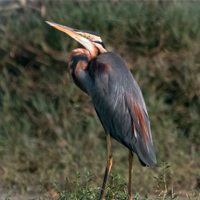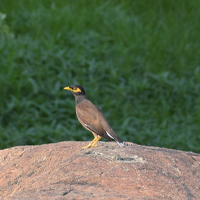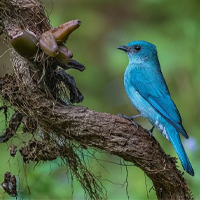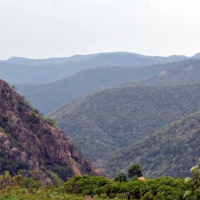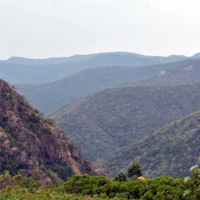DARTER – Vol. 4 – Issue 4 (Oct-Dec 2020)
EDITOR’S NOTE
“As the lockdown was lifted in a phased manner, we gradually resumed our field activities with restrictions. Our birders were able to sight and photograph several species that were new to Salem. We sincerely thank our Salem Forest Department for their amazing support to launch the Birds of Salem pocket guide. We also received a fantastic response to the ongoing nature webinar series, the SOF Sunday Talkies, a pioneering initiative to bring all women birders and nature enthusiasts of Tamil Nadu on a same platform. In each of the bird walks that we organized in these three months, all the mandatory safety protocols and guidelines issued by the Government of Tamil Nadu were strictly followed. All of us are still recovering from the impacts of COVID-19 and it isn’t over yet. Please continue to take precautions and don’t hesitate to get vaccinated when vaccines become available. We wish each of you to have a great and healthy New Year 2021. Sightings and records entered in eBird are only taken into account towards the writing of this e-magazine.”—Ganeshwar S V.
FIRST RECORD (1)
On October 11, 2020, Senthil Kumar S (Vasen Suli) recorded and photographed WHIMBREL Numenius phaeopus for the first time in Salem at Pannavadi, Mettur. To see the complete checklist of birds, please click here.
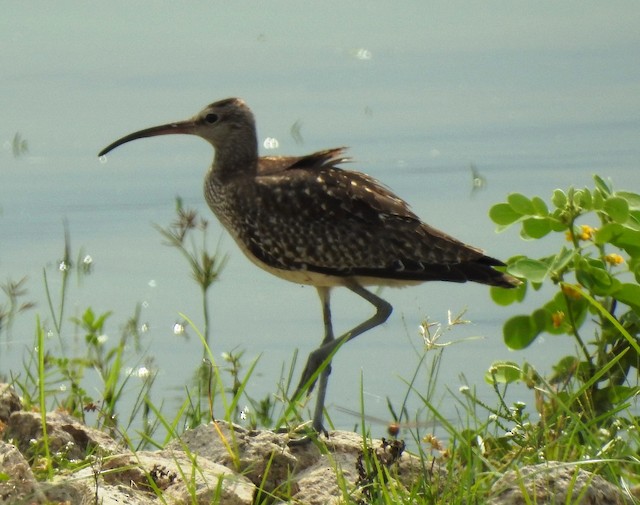
WHIMBREL photographed by Senthil Kumar S (Vasen Suli)
WILD BIRD DAY
On October 17, 2020, SOF organized Wild Bird Day bird walk at Pannavadi, Mettur. Angeline Mano M, Dr Ananth T, Geetha Ananth, Dr Sakthi Chinnakannu, Santhosh, Senthil Kumar S, Subramania Siva S, Vadivukkarasi A along with young birders Mithran, Manoj, Sathish and Manoj Kumar took part in the event.
FIRST RECORD (2)
On October 17, 2020, the team of Angeline Mano M, Dr Ananth T, Geetha Ananth, Mithran A, Dr Sakthi Chinnakannu, Senthil Kumar S (Vasen Suli), Vadivukkarasi A, Subramania Siva recorded EURASIAN WRYNECK Jynx torquilla for the first time in Salem. To see the complete checklist of birds, please click here.
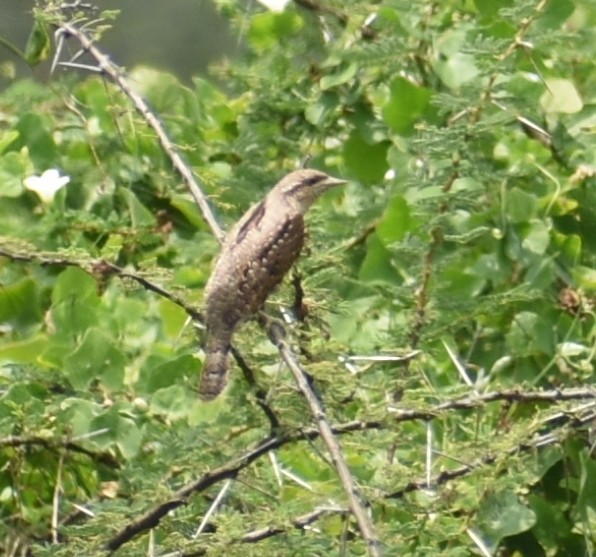
EURASIAN WRYNECK by Angeline Mano
FIRST RECORD (3)
On October 17, 2020, Angeline Mano M, Senthil Kumar S (Vasen Suli), Vadivukkarasi A, Subramania Siva recorded PACIFIC GOLDEN-PLOVER Pluvialis fulva for the first time in Salem at Pannavadi, Mettur. To see the complete checklist of birds, please click here.
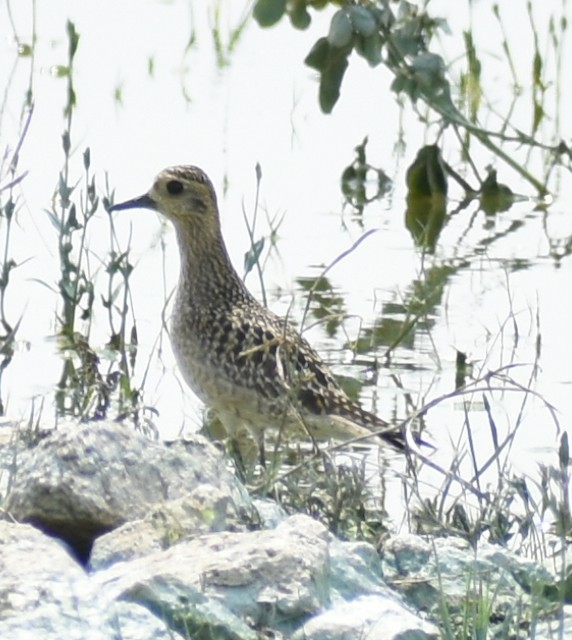
PACIFIC GOLDEN PLOVER photographed by Angeline Mano
FIRST RECORD (4)
On November 1, 2020, the team of Angeline Mano M, Govindarajan, Kalaiselvan V, Senthil Kumar S (Vasen Suli), Subramania Siva S, Tamil Selvan, Vadivukkarasi A, Venkatraman R sighted and photographed EURASIAN HOBBY Falco subbuteo for the first time in Salem at Jamboothumalai Area. To see the complete checklist of birds, please click here.
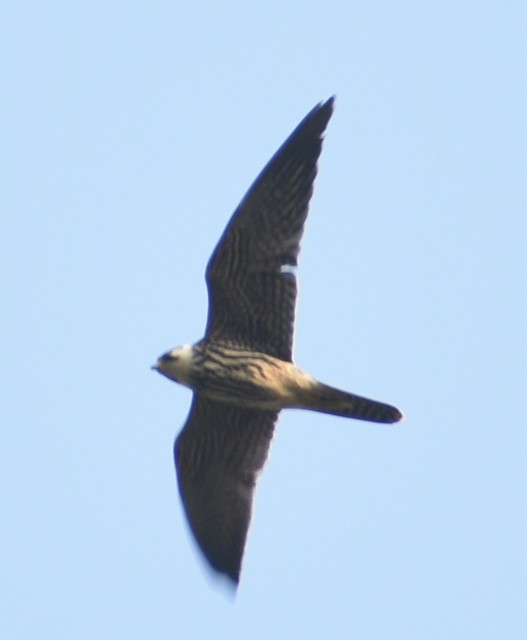
EURASIAN HOBBY photographed by Angeline Mano
SÁLIM ALI BIRD COUNT
As a part of Sálim Ali Birthday Celebrations, bird walks and counts were organized from November 5 – 12, 2020, in which Dr Ananth T, Angeline Mano, Ajitha Sellappan, Elavarasan M, Ganeshwar S V, Geetha Ananth, Gowshikha, Mithran A.G, Monica Sri, Pradeep, Swathi and Yuvaraj Anandhan participated.
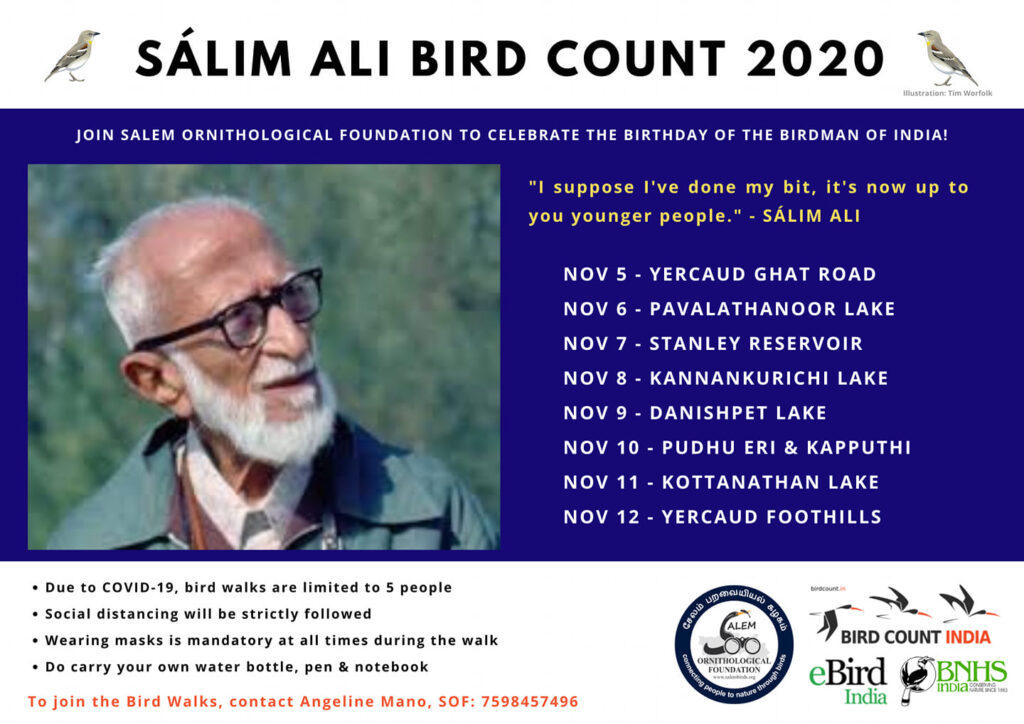
BIRDS OF SALEM POCKET GUIDE LAUNCHED
On the birth anniversary (November 12) of Dr Sálim Ali, the Salem Forest Department in association with Salem Ornithological Foundation, launched the Birds of Salem pocket guide, which is the first foldable pocket guide for a district in India. Salem District Collector Thiru. S.A. Raman, I.A.S, released the guide and Conservator of Forests Thiru. A. Periasamy, I.F.S and District Forest Officer Dr. R. Murugan, I.F.S received the first copies.
The pocket guide was created by Early Bird and the text was written by Ganeshwar SV and Dr P Jeganathan. It covers 165 familiar bird species in Salem, sorted into 6 categories for the ease of identification and includes migratory and endemic birds as well. To purchase the Birds of Salem pocket guide, please click here.
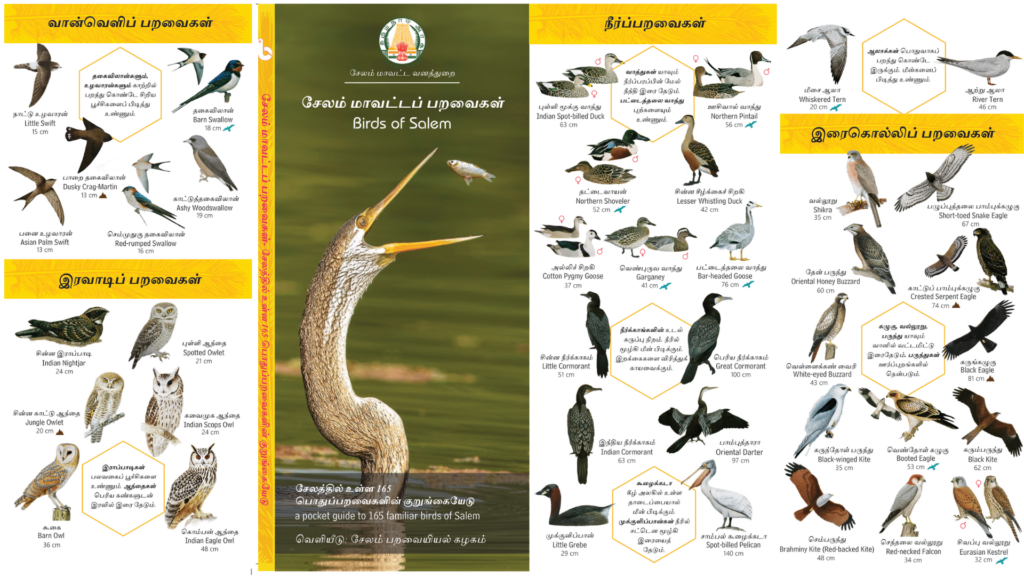
FIRST CALL RECORD
On November 16, 2020, Angeline Mano M and Thileepan V recorded the call of PAINTED SPURFOWL Galloperdix lunulata for the first time in Salem. To listen to the call and for the complete checklist of birds, please click here.
TAMIL BIRDERS’ VIRTUAL MEET
Due to the pandemic, the Tamil Birders Meet by TamilBirds network was conducted virtually this year. Angeline Mano from our team gave two talks: one on the SOF Sunday Talkies and the other on the Asian Waterbird Census 2020. To listen to the rest of the talks, please click here.
SPECIAL VISIT BY A SPECIAL PERSON
On November 24, 2020, eminent media personality Anu Hasan with her friend and renowned psychologist Aarti C Rajaratnam had a memorable birding experience at Salem guided by Ganeshwar SV. We sincerely thank Anu Hasan for her kind words of appreciation and support to our team.
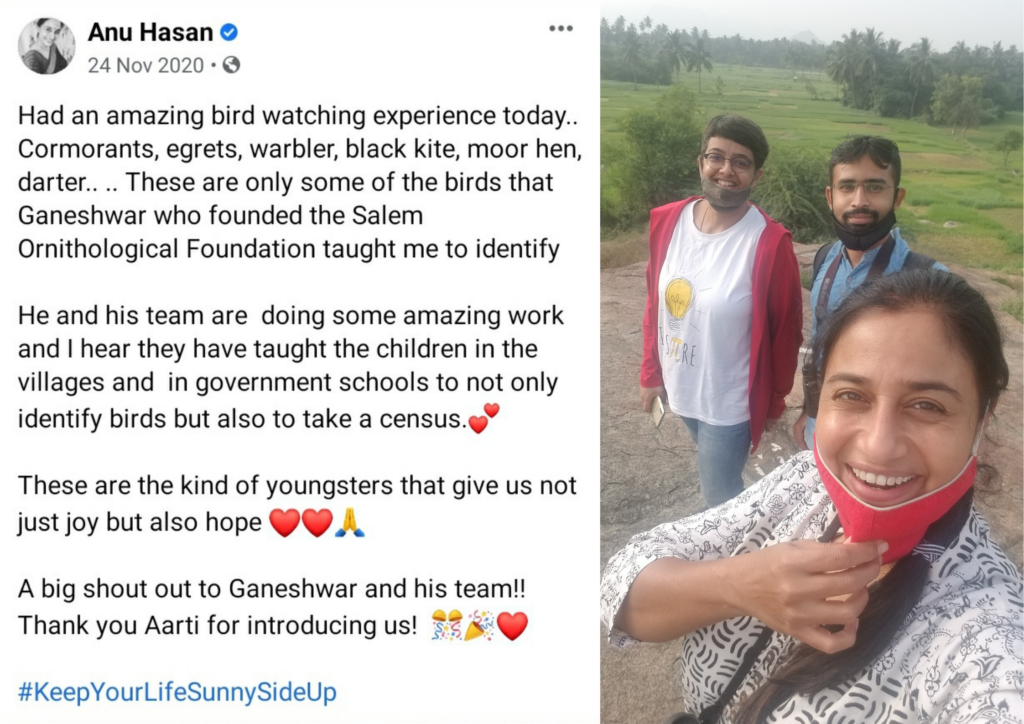
OUTREACH
On November 27, 2020, Ganeshwar SV, Angeline Mano and Senthil Kumar S gave a presentation on the importance of bird watching and the need to take it to the students. It was organized by the District Institute for Education and Training (DIET), Salem. We thank Dr M Selvam, Principal, DIET, Salem and his associates for the opportunity and wonderful hospitality. We also extend our thanks to Franklin from ETV Bharat for the news coverage.
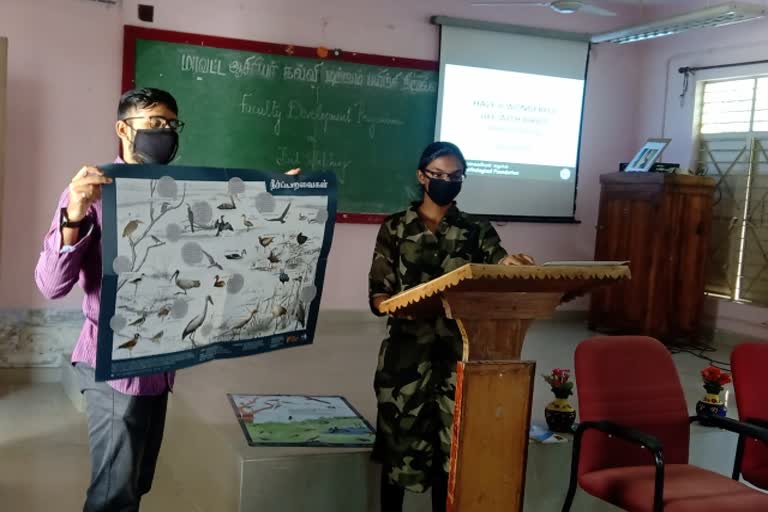
SECOND RECORD
On December 26, 2020, Angeline Mano M and Ganeshwar S V recorded LARGE HAWK-CUCKOO Hierococcyx sparverioides for the second time in Salem at Jamboothumalai Area. To see the complete checklist of birds, please click here. The previous and first record we know is from a Facebook post by Kailas Thiyagarajan who photographed the bird at Yercaud in April 2019.
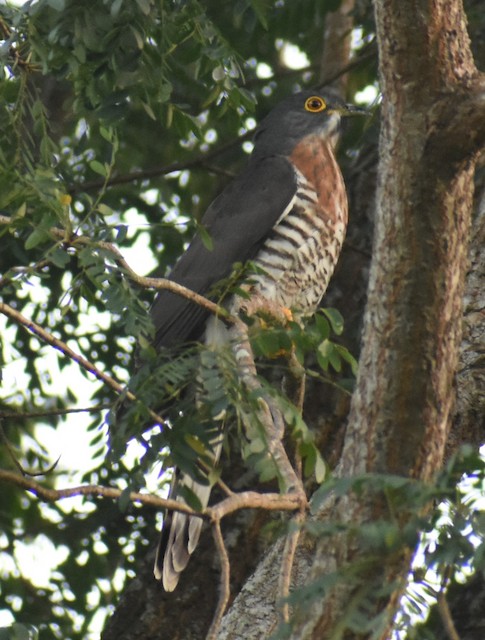
LARGE HAWK-CUCKOO photographed by Angeline Mano
SOF SUNDAY TALKIES
Since August 23, 2020, we have been conducting nature webinars every Sunday at 11 AM in association with Bird Count India. In this series, women would present their experiences, challenges, interesting observations, activities, etc. and in the last quarter of the year, Vadivukkarasi A, Indira S, Sahithya Selvaraj, Kavitha Ramkumar, Ishani Vivek, Rathika Ramasamy, Vidhya Sundar, Sri Sowmiya M, Divya Barathi Ramamuthi, Geethanjali Raghunathan, Vinithashri Gautham, Gomathi N, and Gowshikha R gave insightful and inspiring presentations. There are no eligibility criteria such as educational qualification, experience on field, experience in public speaking, etc. to speak in the webinars; if you are a woman interested in nature, you are most welcome to speak. Please contact us at [email protected]. For more details about the upcoming webinars, do check out Salem Ornithological Foundation’s facebook page.
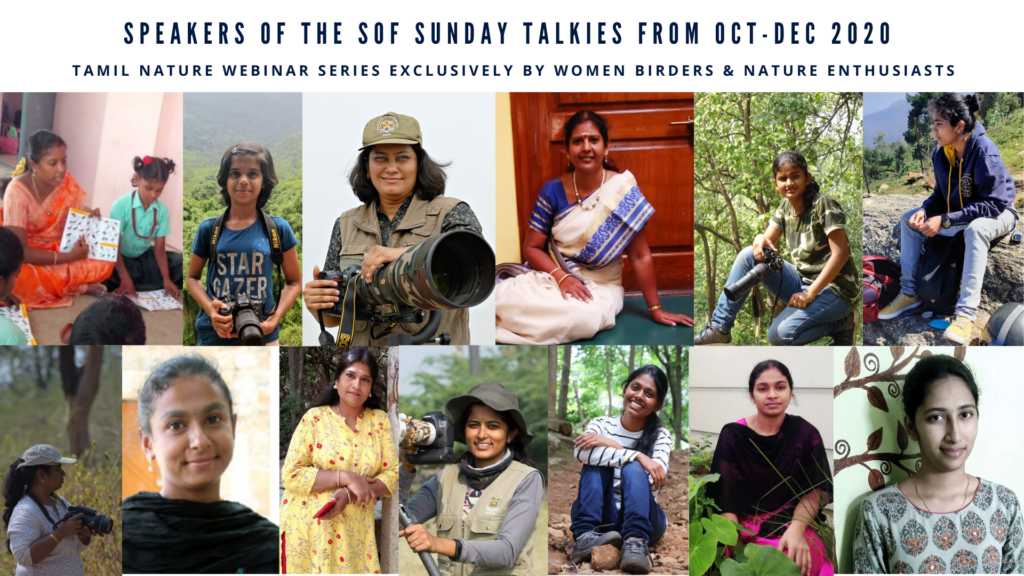
BIODIVERSITY DOCUMENTATION
ACSEN Tex Pvt. Ltd. invited SOF to document the biodiversity at Manivilundhan Old Tank, which they are trying to restore with the support of likeminded individuals and the local community. In a very short period of time, we documented 84 species of birds, 40 species of butterflies, 10 species of dragonflies and damselflies, 5 species of frogs and 30 species of medicinal plants and trees. This preliminary documentation was done by Dr Ananth T, Angeline Mano, Elavarasan M, Ganeshwar SV, Paramasivam P and Venkatesh S. Regular monitoring will give us detailed insights to the biodiversity of the wetland.
In the picture: Large Grey Babbler, Alpine Swift, Ashy Prinia, Ashy-crowned Sparrow-Lark (male), Blue-tailed Bee-eater and Indian Roller photographed by Venkatesh S.
DARTER – Vol. 4 – Issue 4 (Oct-Dec 2020) Read More »

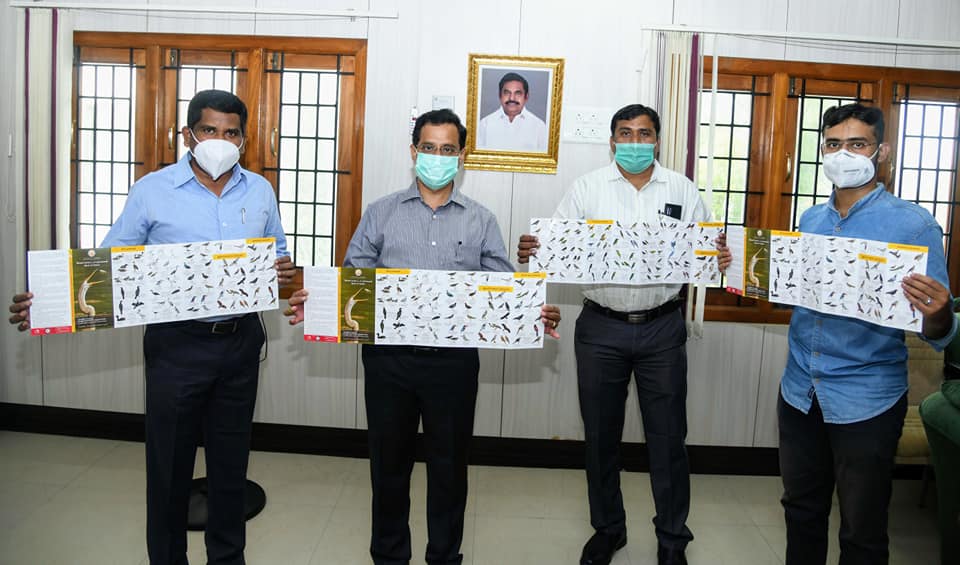

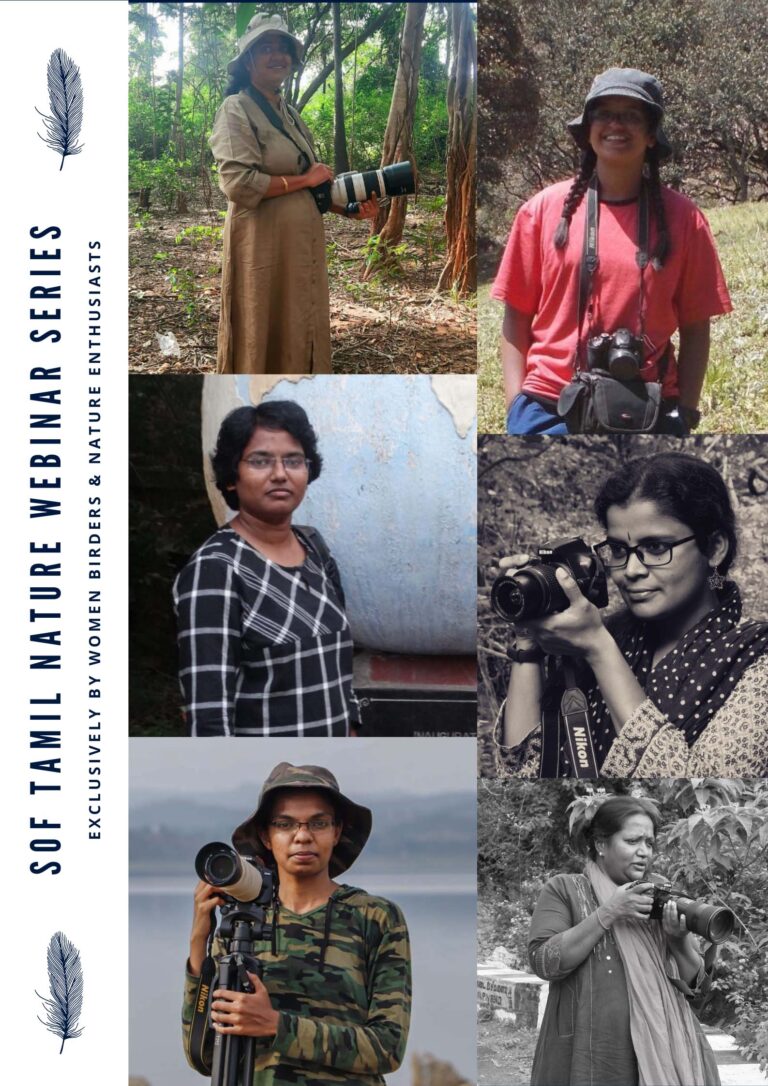

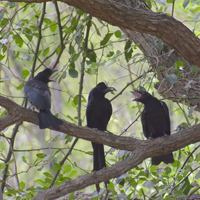




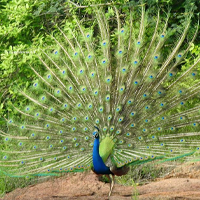


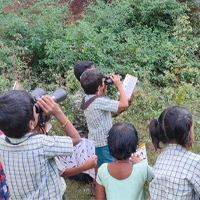
 One of the wetlands covered during AWC. Photo: Ganeshwar SV
One of the wetlands covered during AWC. Photo: Ganeshwar SV Enthusiastic bunch of Latchumayur School students. Photo: Ganeshwar SV
Enthusiastic bunch of Latchumayur School students. Photo: Ganeshwar SV Ganeshwar SV addressing on the basics of bird identification. Photo: Venkatesh S
Ganeshwar SV addressing on the basics of bird identification. Photo: Venkatesh S TICKELL’S THRUSH photographed by Kalaiselvan
TICKELL’S THRUSH photographed by Kalaiselvan